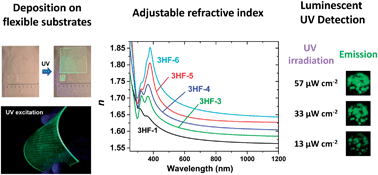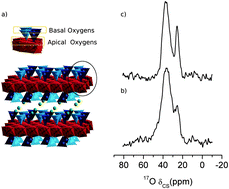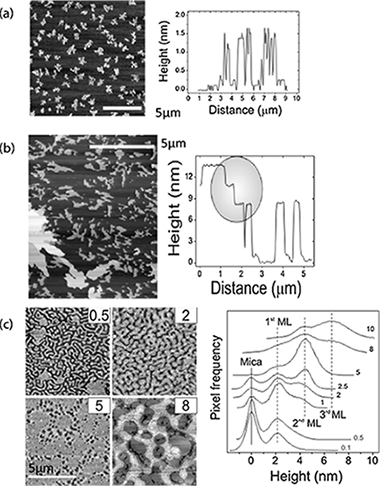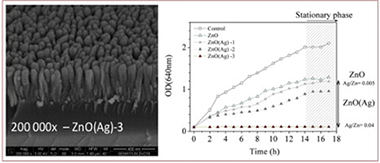Artículos SCI
2014
2014
Reactividad de Sólidos
Calcium-looping for post-combustion CO2 capture. On the adverse effect of sorbent regeneration under CO2
Valverde, JM; Sanchez-Jimenez, PE; Perez-Maqueda, LAApplied Energy, 126 (2014) 161-171
Show abstract ▽

The multicyclic carbonation/calcination (c/c) of CaO solid particles at high temperature is at the basis of the recently emerged Calcium-looping (CaL) technology, which has been shown to be potentially suitable for achieving high and sustainable post-combustion CO2 capture efficiency. Despite the success of pilot plant projects at the MWth scale, a matter of concern for scaling-up the CaL technology to a commercial level (to the GWth scale) is that the CaO carbonation reactivity can be recovered only partially when the sorbent is regenerated by calcination at high temperatures (around 950 °C) as required by the CO2 high concentration in the calciner. In order to reactivate the sorbent, a novel CaL concept has been proposed wherein a recarbonator reactor operated at high temperature/high CO2 concentration leads to further carbonation of the solids before entering into the calciner for regeneration. Multicyclic thermogravimetric analysis (TGA) tests demonstrate the feasibility of recarbonation to reactivate the sorbent regenerated at high calcination temperatures yet at unrealistically low CO2 partial pressure mainly because of technical limitations concerning low heating/cooling rates. We report results from multicyclic c/c and carbonation/recarbonation/calcination (c/r/c) TGA tests at high heating/coling rates and in which the sorbent is regenerated in a dry atmosphere at high CO2 partial pressure. It is shown that at these conditions there is a drastic drop of CaO conversion to a very small residual value in just a few cycles. Moreover, the introduction of a recarbonation stage has actually an adverse effect. Arguably, CaCO3 decomposition in a CO2 rich atmosphere is ruled by CO2 dynamic adsorption/desorption in reactive CaO (1 1 1) surfaces as suggested by theoretical studies, which would preclude the growth of the regenerated CaO crystal structure along these reactive surfaces, and this effect would be intensified by recarbonation. Nevertheless, the presence of H2O in the calciner, which is also adsorbed/desorbed dynamically in CaO reactive planes, would shield CO2 adsorption/desorption thus mitigating the deeply detrimental effect of CO2 on the carbonation reactivity of the regenerated CaO structure. Oxy-combustion, which produces a significant amount of H2O, is currently used in pilot-scale plants to raise the temperature in the calciner. Auxiliary techniques are being explored to help heating the partially carbonated solids since oxyxombustion represents an important penalty to the CaL technology. Our study suggests that steam injection would be necessary in a dry calciner environment to avoid a sharp loss of CaO conversion if the sorbent is regenerated at high CO2 partial pressure.
Agosto, 2014 | DOI: 10.1016/j.apenergy.2014.03.081
Nanotecnología en Superficies y Plasma
Luminescent 3-hydroxyflavone nanocomposites with a tuneable refractive index for photonics and UV detection by plasma assisted vacuum deposition
Aparicio, FJ; Alcaire, M; Borras, A; Gonzalez, JC; Lopez-Arbeloa, F; Blaszczyk-Lezak, I; Gonzalez-Elipe, AR; Barranco, AJournal of Materials Chemistry C, 2 (2014) 6561-6573
Show abstract ▽

Luminescent organic-thin-films transparent in the visible region have been synthesized by a plasma assisted vacuum deposition method. The films have been developed for their implementation in photonic devices and for UV detection. They consist of a plasma polymeric matrix that incorporates 3-hydroxyflavone molecules characterized by absorption of UV radiation and emission of green light. The present work studies in detail the properties and synthesis of this kind of transparent and luminescent material. The samples were characterized by X-ray photoemission (XPS), infrared (FT-IR) and secondary ion mass (ToF-SIMS) spectroscopies; and their optical properties were analysed by UV-Vis absorption, fluorescence and ellipsometry (VASE) spectroscopies. The key factors controlling the optical and luminescent properties of the films are also discussed. Indeed, our experimental results show how the optical properties of the films can be adjusted for their integration in photonic devices. Moreover, time resolved and steady state fluorescence analyses, including quantum yield determination, indicate that the fluorescence efficiency is a function of the deposition parameters. An outstanding property of these materials is that, even for high UV absorption values (i.e. large layer thickness and/or dye concentration), the emitted light is not reabsorbed by the film. Such highly UV absorbent and green emitting films can be used as UV photodetectors with a detection threshold smaller than 10 mu W cm(-2), a value similar to the limit of some commercial UV photodetectors. Based on these properties, the use of the films as visual tags for the detection of solar UV irradiation is proposed.
Agosto, 2014 | DOI: 10.1039/c4tc00294f
Materiales de Diseño para la Energía y Medioambiente
Direct evidence of Lowenstein's rule violation in swelling high-charge micas
Pavon, E; Osuna, FJ; Alba, MD; Delevoye, LChemical Communications, 53 (2014) 6984-6986
Show abstract ▽

The structure of high-charged micas, Na-n-micas (n = 2 and 4), a family of synthetic silicates with a wide range of applications, was investigated through the use of 17O solid-state NMR at natural abundance in order to preserve quantitative spectral information. The use of a very high-field and highly sensitive probehead, together with 17O NMR literature data allowed for the detection of an isolated signal at 26 ppm, assigned partially to AlOAl, as evidence of the violation of Lowenstein's rule for Na-4-mica.
Julio, 2014 | DOI: 10.1039/C4CC01632G
Materiales de Diseño para la Energía y Medioambiente
Biomimetic polymers of plant cutin: an approach from molecular modeling
San-Miguel, MA; Oviedo, J; Heredia-Guerrero, JA; Heredia, A; Benitez, JJJournal of Molecular Modeling, 20 (2014) 2329
Show abstract ▽

Biomimetics of materials is based on adopting and reproducing a model in nature with a well-defined functionality optimized through evolution. An example is barrier polymers that protect living tissues from the environment. The protecting layer of fruits, leaves, and non-lignified stems is the plant cuticle. The cuticle is a complex system in which the cutin is the main component. Cutin is a biopolyester made of polyhydroxylated carboxylic acids of 16 and 18 carbon atoms. The biosynthesis of cutin in plants is not well understood yet, but a direct chemical route involving the self-assembly of either molecules or molecular aggregates has been proposed. In this work, we present a combined study using experimental and simulation techniques on self-assembled layers of monomers selectively functionalized with hydroxyl groups. Our results demonstrate that the number and position of the hydroxyl groups are critical for the interaction between single molecules and the further rearrangement. Also, the presence of lateral hydroxyl groups reinforces lateral interactions and favors the bi-dimensional growth (2D), while terminal hydroxyl groups facilitate the formation of a second layer caused by head–tail interactions. The balance of 2D/3D growth is fundamental for the plant to create a protecting layer both large enough in 2D and thick enough in 3D.
Julio, 2014 | DOI: 10.1007/s00894-014-2329-y
Nanotecnología en Superficies y Plasma
Influence of thickness and coatings morphology in the antimicrobial performance of zinc oxide coatings
Carvalho, P; Sampaio, P; Azevedo, S; Vaz, C; Espinos, JP; Teixeira, V; Carneiro, JOApplied Surface Science, 307 (2014) 548-557
Show abstract ▽

In this research work, the production of undoped and silver (Ag) doped zinc oxide (ZnO) thin films for food-packaging applications were developed. The main goal was to determine the influence of coatings morphology and thickness on the antimicrobial performance of the produced samples. The ZnO based thin films were deposited on PET (Polyethylene terephthalate) substrates by means of DC reactive magnetron sputtering. The thin films were characterized by optical spectroscopy, X-Ray Diffraction (XRD), X-ray photoelectron spectroscopy (XPS) and Scanning Electron Microscopy (SEM). The antimicrobial performance of the undoped and Ag-doped ZnO thin films was also evaluated. The results attained have shown that all the deposited zinc oxide and Ag-doped ZnO coatings present columnar morphology with V-shaped columns. The increase of ZnO coatings thickness until 200 nm increases the active surface area of the columns. The thinner samples (50 and 100 nm) present a less pronounced antibacterial activity than the thickest ones (200–600 nm). Regarding Ag-doped ZnO thin films, it was verified that increasing the silver content decreases the growth rate of Escherichia coli and decreases the amount of bacteria cells present at the end of the experiment
Julio, 2014 | DOI: 10.1016/j.apsusc.2014.04.072
- ‹ anterior
- 270 of 420
- siguiente ›














